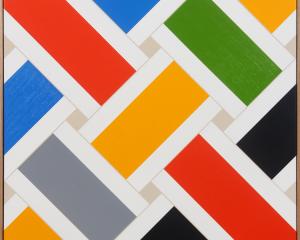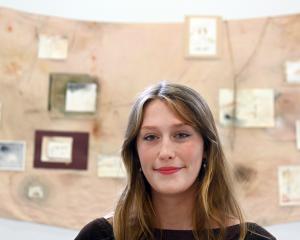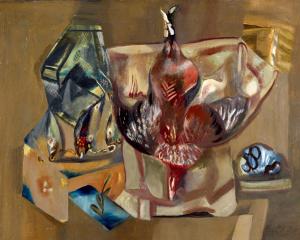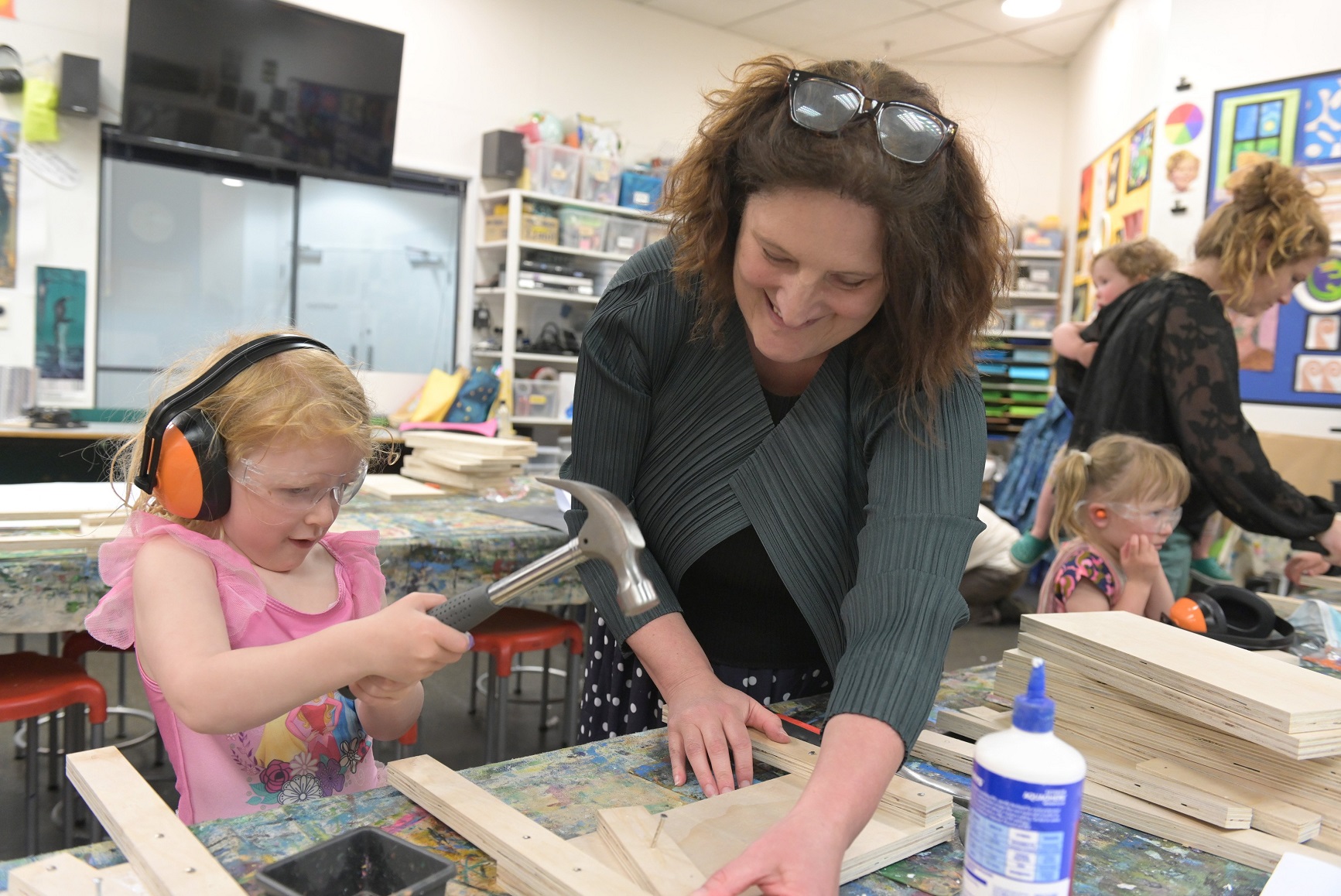
It all began in a toy factory.
A young Emily Floyd could often be found helping her grandmother make and oil the kauri building blocks headed for kindergartens from her parents’ Melbourne factory.
"I just always worked in that business."
Not only did that experience growing up lead to a career as an artist — she did a sculpture degree — but it also spiked her interest in learning through making that has imbued her practice.
"It comes out of that history working with people seriously thinking about environments for children and I had the skills; I knew how to use all the tools .
"At the time it was quite masculine-centric, the whole culture around sculpture, and I began to think about the cultures around child care I had grown up with and women organising space."
So when she was invited to come to Dunedin as the Dunedin Public Art Gallery Creative New Zealand Toi Aotearoa International Visiting Artist it was natural for her to take advantage of the city’s strong history in education.
"It’s an impressive place. It’s difficult work."
Given the restrictions of the past few years, it was also an opportunity to think about what it means to come for a residency as opposed to an exhibition. Normally with a residency artists visit the host and then develop a project in the place and present it.
"I wanted to do it the other way around so I’d have more time."
Floyd came to Dunedin in the winter, got to know the city and spend time with the collections at the Hocken, which holds transcripts of lectures by early learning scholar Emeritus Prof Margaret Carr.
"As I have a special interest in education — the early years. My idea was to bring some things of yourself and present something that is the beginning of learning about a place and learning about the histories of developing early childhood frameworks in Aotearoa and the important work women have done in that space that is really impressive. I mean, really impressive."
She was also introduced to Prof Alexandra C. Gunn, a scholar of early childhood education, one of the builders of the framework.
"It’s built on this idea of weaving knowledge and continuing re-evaluating what is right for children and how to build an inclusive space."
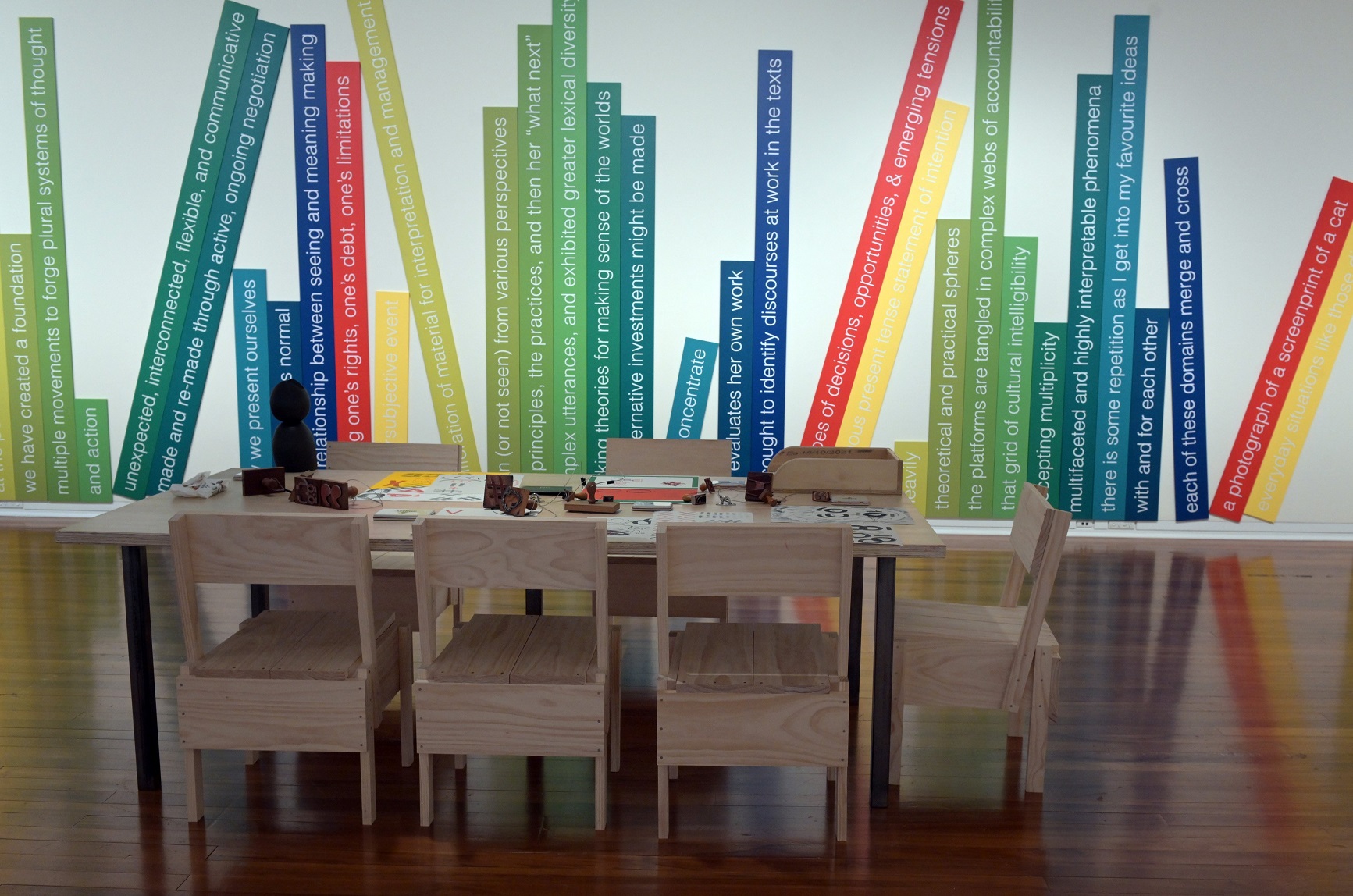
"To me you see this incredible purpose and optimism constantly reworking, constantly rethinking and centring the child, which hopefully makes people think about bringing children into the museum and thinking of them as fully fledged viewing objects, if tactile.
"So we’ve presented things we know are going to be OK — metal sculptures and experimenting with things at different heights. In a prepared environment for children, even at home, everything is not there at once."
When dealing with children there are systems for organising and arranging spaces to be functional.
"I’m always thinking how that it is such an important sculptural practice. We can all see ourselves as sculptors in that way — we are thinking about space."
The quotes have been installed like bookends, making them difficult to read and absorb in one viewing.
"It speaks to the enormous body of knowledge that everyone contributes [to]. It is a monumental project."
One of the first objects children will see upon entering the exhibition is Floyd’s child-sized Owl of Minerva, a symbol of knowledge and learning, the companion of Athena, the Goddess of Wisdom. Made of aluminium with a slick automotive finish, it was brought by Floyd from her home in Melbourne.
As part of her thinking about going from small to big objects for children, Floyd has juxtaposed Minerva with a small owl sculpture hanging at the other end of the gallery.
"I love how in the early childhood setting you have things of different scale and how scale appears when you are little. Something that is quite small to an adult can appear massive to little ones."
She carved the owl from wood and painted it. Then it was digitally scanned and patterns were cut out by robots.
"We go from small to big that way and it’s cast."
She also brought with her cast bronze sculptures which are asking philosophical questions through thought bubbles such as "works of arts exist, how are they possible?".
"In a really beautiful moment at the talk someone from the audience asked what do you do with these afterwards and how do they tie into the economy which is a nice tie back into that question."
Floyd likes the finishes used in her different sculptures to tie together so the acrylic paint used on the owl is also used on the exhibition’s and workshop’s posters.
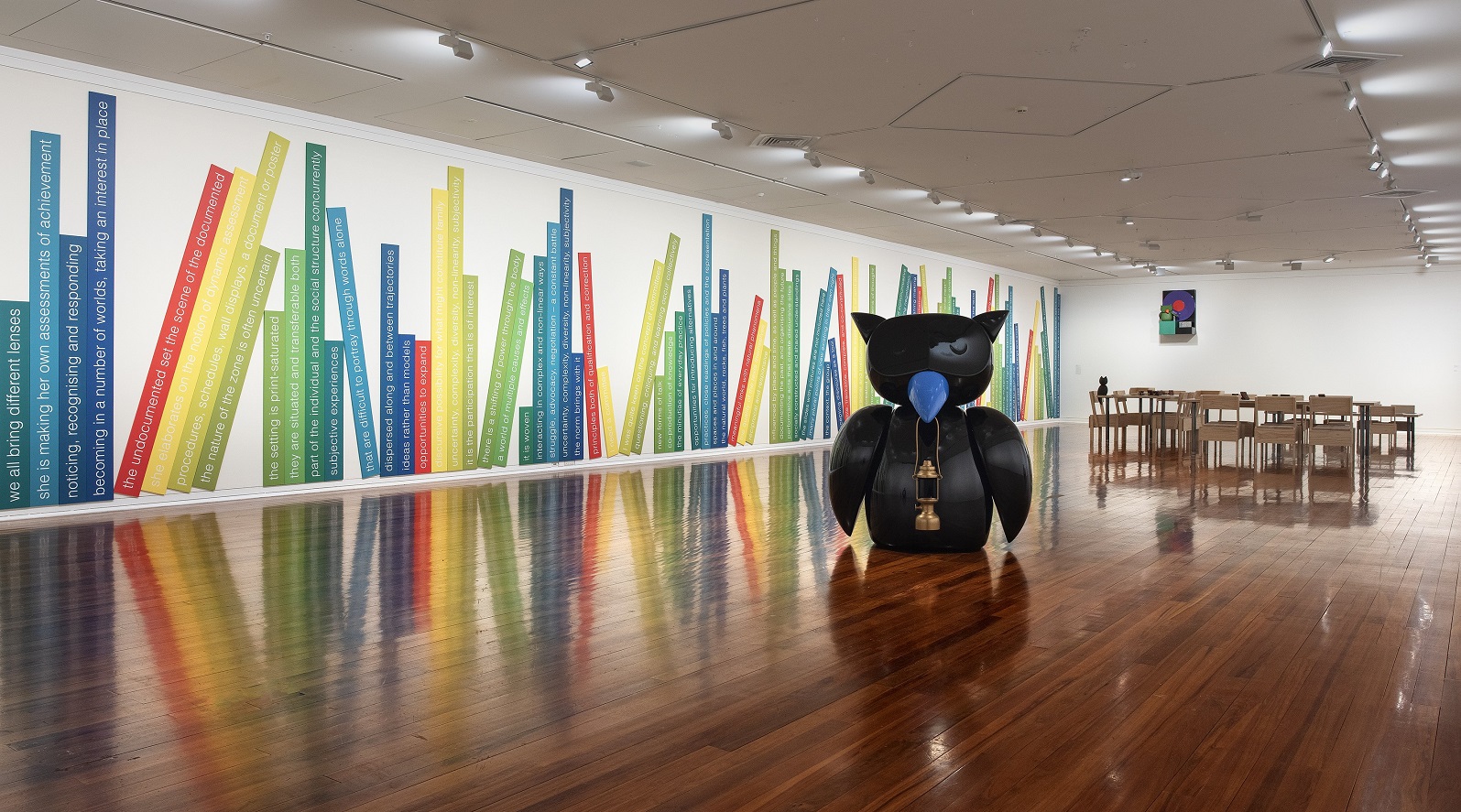
A major part of the exhibition is the making space. Floyd constructed furniture for the shared space from the Autoprogettazione series by the Italian modernist designer and artist Enzo Mari (1932-2020). Designed in 1974 as a response to the mass production of furniture, Mari’s designs provided an open-source blueprint for DIY makers.
She has invited children and their parents to various workshops, where they have built their own Mari chair or used specially made stamps with images relating to the exhibition to create works. They have often been sold out.
"It went really well and was really empowering for the mums. Some families made two chairs — it felt really equable. The whole museum was like bang, bang, bang — it was like a sound performance. It’s been a really great way to meet people and share the work.
"You get good feedback-stroke-criticism as kids keep it real."
Her work in Dunedin is an extension of her making over the years. She makes what she likes to call "philosophical toys" in a variety of scales.
Floyd has just completed a work, in more of a "architectural scale" for Shanghai East Library. She was commissioned to create artworks for the children’s library. Referencing motifs from traditional Manhua literature, Floyd’s Butterfly Kites and Knowledge Power, weave through the spaces of the library, central courtyard and outdoor play areas.
"At a different scale they become like play sculptures and children can inhabit them in a different way. Going from little to really big — the biggest sculpture I’ve made is 12m by 20m, really big. They’re usually long too. The one in Shanghai is 3m by 20m. It is a sentence that winds through the space."
Seeing her large works come to life is a relief "if it looks good" and does not look too "carni" or "uninteresting". It’s about keeping the same "charismatic" surface — she often uses a "very sleek automotive finish" — but scaling it up.
"It’s the process of translation — lots of conversations, , respecting other makers, making sure everyone feels it has been ethically produced, everyone feels valued. I try to work backwards from that point where everyone is happy so there is no loss of resolution from that point.
"It’s what attracts people to the objects and they start to have their own life — I hope."
Her visits to Dunedin for the residency have been her first so she has been enjoying getting out and seeing the city and its surrounds. She recently visited Bluff and the Catlins.
"It’s just extraordinary. I was like hyperventilating when I saw the sea lions. They’re just so cute and the penguins too."
TO SEE
Emily Floyd, "Keeping it Complex, Keeping it Connected", until March 4, 2023; An Evening for Exhausted Educators, December 2, 4:30pm — 5:30pm. Further workshops will be programmed in the new year.








